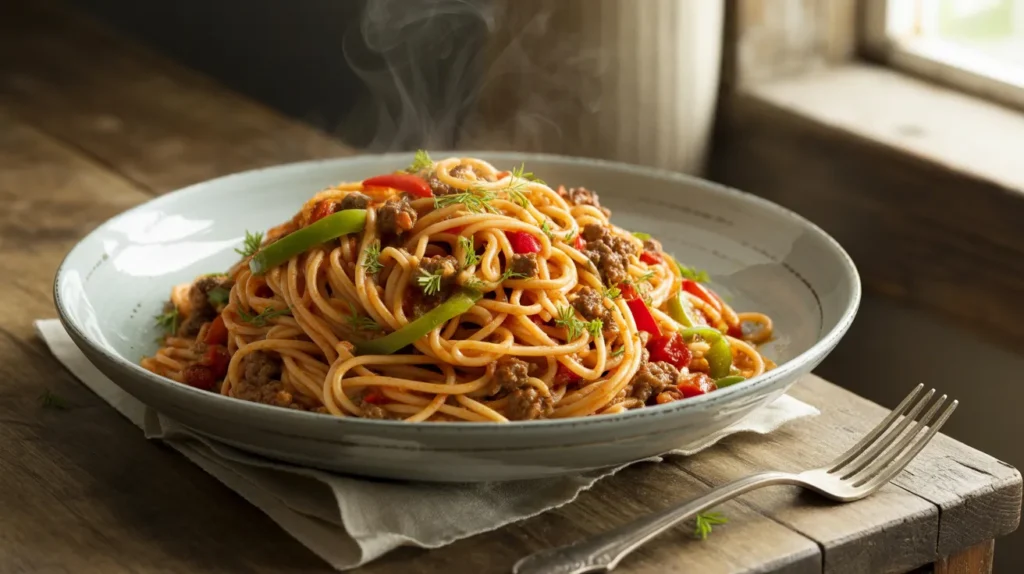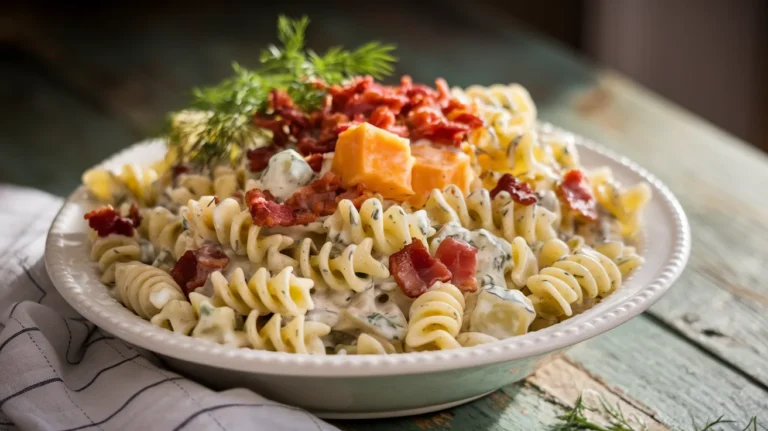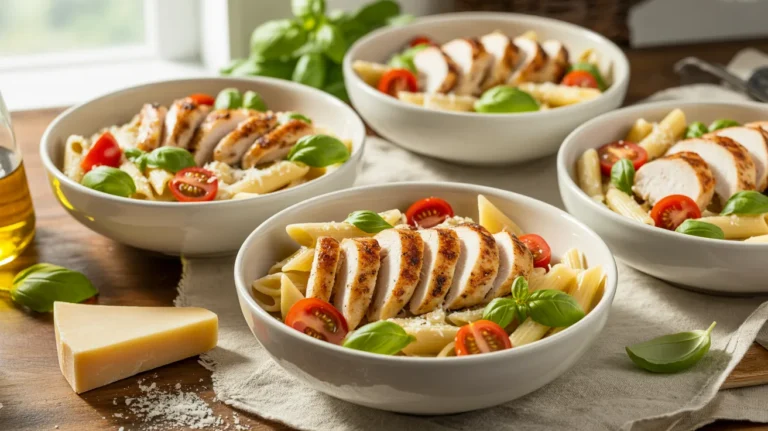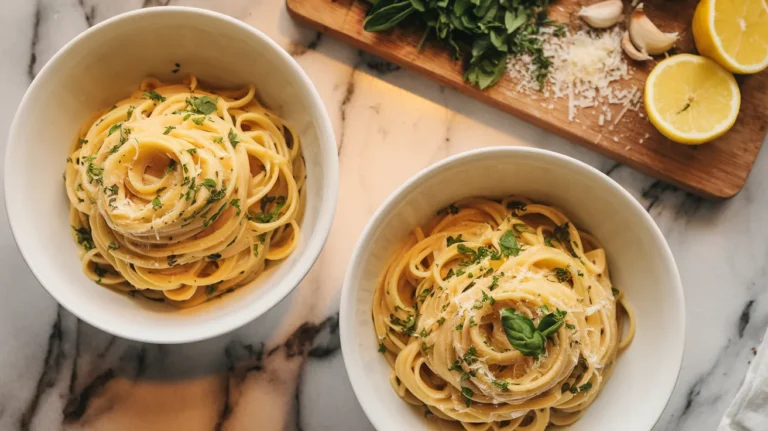Key Takeaways:
- This haitian spaghetti combines Italian pasta with bold Caribbean spices and aromatic herbs
- Perfect one-pot comfort meal ready in just 45 minutes using everyday ingredients
- Features a rich, savory tomato-based sauce with scotch bonnet peppers and ground beef
- Beginner-friendly recipe with detailed step-by-step guidance for cooking success
Introduction
Tired of the same old spaghetti routine? Haitian spaghetti transforms your regular pasta night into an exciting Caribbean adventure. This incredible fusion dish takes familiar Italian pasta and elevates it with vibrant Haitian flavors that’ll make your taste buds dance.
What makes haitian spaghetti so special is how it perfectly balances sweet tomatoes, aromatic spices, and just the right amount of heat from scotch bonnet peppers. I first tasted this amazing dish at a friend’s family gathering, and I knew I had to learn the secrets behind this comforting yet exotic meal.
The beauty of this haitian spaghetti recipe lies in its simplicity – you probably have most ingredients in your pantry right now. Let me walk you through every single step so you can create this masterpiece in your own kitchen.
Nutrition Comparison (Per Serving)
| Nutrient | Haitian Spaghetti | Regular Spaghetti | Health Benefits |
|---|---|---|---|
| Calories | 385 | 220 | Higher energy content |
| Protein | 18g | 8g | Supports muscle building |
| Carbs | 58g | 44g | Sustained energy release |
| Fat | 12g | 1g | Essential fatty acids |
| Fiber | 4g | 2g | Better digestive health |
| Vitamin C | 45mg | 2mg | Immune system boost |
| Iron | 4.2mg | 1.8mg | Prevents anemia |
Equipment & Ingredients for Perfect Haitian Spaghetti
Complete Ingredients List (Serves 4)
| Ingredient | Exact Amount | Shopping Notes |
|---|---|---|
| Spaghetti pasta | 1 lb (454g) | Choose regular thickness, not angel hair |
| Ground beef (80/20) | 1 lb (454g) | 80/20 blend gives best flavor and texture |
| Tomato paste | 6 oz can | Look for no-salt-added versions |
| Crushed tomatoes | 14 oz can | San Marzano preferred for sweetness |
| Yellow onion | 1 large (8 oz) | Sweet onions work great too |
| Bell peppers | 2 medium | Use 1 red, 1 green for color contrast |
| Fresh garlic | 4 large cloves | Avoid pre-minced for best flavor |
| Scotch bonnet pepper | 1 small | Habanero works as substitute |
| Vegetable oil | 3 tbsp | Canola or corn oil preferred |
| Chicken bouillon cubes | 2 cubes | Knorr brand recommended |
| Dried thyme | 1 tsp | Fresh thyme: use 1 tbsp |
| Black pepper | 1/2 tsp | Freshly cracked preferred |
| Sea salt | 1 tsp | Kosher salt works too |
| Bay leaves | 2 leaves | Remove before serving |
| Water | 6 cups | For pasta cooking |
Essential Kitchen Tools
| Tool | Why You Need It | Alternative Options |
|---|---|---|
| Large heavy-bottom pot (8-qt) | Even heat distribution | Dutch oven works perfectly |
| Medium non-stick skillet | Easy cleanup for meat | Cast iron skillet if seasoned |
| Long wooden spoon | Won’t scratch cookware | Silicone spoon works too |
| Sharp chef’s knife | Clean vegetable cuts | 8-inch knife minimum |
| Large cutting board | Safe prep surface | Use separate board for meat |
| Can opener | Opening tomato products | Manual or electric both fine |
| Measuring cups/spoons | Accurate portions | Digital scale even better |
| Large colander | Draining pasta properly | Fine-mesh strainer works |
| Ladle | Serving hot pasta | Large spoon alternative |
Smart Substitutions for Haitian Spaghetti
- Meat alternatives: Ground turkey (leaner), ground chicken, or Italian sausage (remove casings)
- Heat control: Jalapeño pepper for mild heat, or omit peppers entirely for kids
- Vegetarian version: Replace meat with mushrooms, eggplant, or plant-based ground meat
- Gluten-free: Use rice pasta, corn pasta, or chickpea pasta
- Low-sodium: Use low-sodium bouillon and reduce salt accordingly
Detailed Beginner’s Guide to Making Haitian Spaghetti
Total Prep Time: 20 minutes
Active Cook Time: 35 minutes
Total Time: 55 minutes
Difficulty Level: Beginner-Friendly
Phase 1: Preparation Setup (15 minutes)
Step 1: Water Preparation (5 minutes) Fill your largest pot with 6 cups of cold water. Add 1 tablespoon of salt to the water – this seasons the pasta from the inside out. Place pot on your largest burner and turn heat to high. Cover with a lid to speed up boiling. The water should reach a rolling boil in 8-10 minutes.
Beginner tip: Salted water boils at a higher temperature, so don’t add salt until water starts heating.
Step 2: Onion Preparation (3 minutes) Peel your large onion and cut off both ends. Cut the onion in half from top to bottom. Place each half flat-side down on your cutting board. Make horizontal cuts about 1/4 inch apart, then vertical cuts the same distance apart. This creates small, uniform pieces that cook evenly.
Safety note: Keep your fingertips curved and knuckles forward when cutting to avoid accidents.
Step 3: Bell Pepper Preparation (4 minutes) Wash bell peppers under cold water. Cut off the tops and remove all seeds and white membranes inside. Cut each pepper into strips, then dice into 1/2-inch squares. Keep red and green peppers in separate bowls – we’ll add them at different times for optimal texture.
Step 4: Garlic and Hot Pepper Prep (3 minutes) Peel garlic cloves by crushing them lightly with the flat side of your knife – the skins will slip right off. Mince garlic finely using a rocking motion with your knife.
For scotch bonnet pepper: WEAR GLOVES OR WASH HANDS IMMEDIATELY AFTER. Cut pepper in half, remove all seeds and white parts (this reduces heat significantly). Mince extremely finely – you want tiny pieces distributed throughout.
Critical safety warning: Never touch your eyes or face after handling hot peppers, even hours later.
Phase 2: Building the Base Flavors (12 minutes)
Step 5: Browning the Ground Beef (6 minutes) Heat 2 tablespoons vegetable oil in your medium skillet over medium-high heat. The oil should shimmer but not smoke – if it smokes, lower the heat immediately.
Add ground beef to the hot pan, breaking it apart with your wooden spoon into small, bite-sized pieces. Don’t stir too frequently – let the meat brown for 2-3 minutes before stirring. Continue cooking, stirring occasionally, until no pink remains and meat develops a nice brown color. This should take 5-6 minutes total.
Beginner mistake to avoid: Don’t overcrowd the pan or the meat will steam instead of brown.
Step 6: Creating the Aromatic Base (6 minutes) Push the browned beef to one side of your skillet. Add remaining 1 tablespoon oil to the empty space. Add diced onions to the oil and cook for 2-3 minutes until they become translucent and start to soften.
Add minced garlic and scotch bonnet pepper to the onions. Stir everything together with the beef and cook for 1 minute until you can smell the garlic becoming fragrant.
Pro tip: If garlic starts turning brown, immediately remove pan from heat – burnt garlic tastes bitter.
Phase 3: Sauce Development (15 minutes)
Step 7: Tomato Paste Integration (3 minutes) Add the entire 6 oz can of tomato paste directly to your meat mixture. Using your wooden spoon, stir everything together until the meat and vegetables are completely coated with tomato paste. Cook for 2-3 minutes, stirring constantly.
You’ll notice the tomato paste darkens slightly – this is perfect. This step builds deep, rich flavor that makes haitian spaghetti so special.
Step 8: Adding Wet Ingredients (2 minutes) Pour in the crushed tomatoes, including all the liquid from the can. Add both bay leaves, crumbled bouillon cubes, dried thyme, and black pepper. Stir everything together thoroughly.
The mixture should look saucy but not watery. If it seems too thick, add 2-3 tablespoons of hot water from your pasta pot.
Step 9: Vegetable Addition and Simmering (10 minutes) Add diced bell peppers to the sauce. Stir gently to distribute evenly. Reduce heat to medium-low and let the sauce simmer gently.
You should see small bubbles occasionally breaking the surface – not a rapid boil. Stir every 2-3 minutes to prevent sticking. The peppers should soften but still have a slight bite, and the sauce should thicken noticeably.
Timing tip: This is when you should start cooking your pasta if your water is boiling.
Phase 4: Pasta Cooking and Combining (8 minutes)
Step 10: Perfect Pasta Cooking (8 minutes) When your water reaches a rolling boil (big bubbles constantly breaking the surface), add your spaghetti. Stir immediately to prevent sticking, then stir again after 2 minutes.
Cook the pasta for 2 minutes LESS than the package directions suggest. For example, if the box says 10 minutes, cook for only 8 minutes. The pasta will finish cooking when combined with the hot sauce.
Essential step: Set a timer – overcooked pasta ruins the entire dish.
Step 11: Pasta Water Reserve (1 minute) Before draining pasta, use a measuring cup to scoop out 1 full cup of the starchy pasta cooking water. Set this aside – you’ll need it to help bind the sauce to the pasta.
This starchy water is secret ingredient that makes restaurant-quality haitian spaghetti at home.
Step 12: Draining and Immediate Combining (2 minutes) Drain pasta in your colander quickly – don’t let it sit or it will stick together. Immediately add the hot, drained pasta directly to your skillet with the sauce.
Using tongs or your wooden spoon, toss everything together over medium-low heat. The pasta should be completely coated with sauce within 1-2 minutes of tossing.
Phase 5: Final Seasoning and Serving (5 minutes)
Step 13: Sauce Consistency Adjustment (3 minutes) Add reserved pasta water 2 tablespoons at a time while tossing the pasta. The goal is a silky sauce that coats each strand of spaghetti without being watery or dry.
You might need anywhere from 1/4 to 3/4 cup of pasta water – every batch is different. Stop adding water when the sauce clings nicely to the pasta but still looks glossy.
Step 14: Final Seasoning (2 minutes) Remove bay leaves and discard them. Taste your haitian spaghetti carefully and adjust seasoning. Add salt 1/4 teaspoon at a time – remember, the bouillon cubes already add saltiness.
Add more black pepper or a tiny pinch of minced scotch bonnet if you want more heat.
Step 15: Rest and Serve Remove from heat and let the dish rest for 2 minutes. This allows all flavors to meld together perfectly.
Serve immediately in warmed bowls for the best experience. The pasta should be steaming hot with sauce that clings to every strand.

Troubleshooting Your Haitian Spaghetti
Issue: Sauce is too watery
Fix: Return to medium heat and cook uncovered for 3-5 minutes, stirring frequently until excess liquid evaporates
Issue: Pasta is mushy or overcooked
Fix: Next time, cook pasta 3 minutes less than package directions and let it finish cooking in the sauce
Issue: Not enough heat or flavor
Fix: Add 1/4 teaspoon cayenne pepper or more minced scotch bonnet. Taste after each small addition
Issue: Sauce won’t stick to pasta
Fix: Add more hot pasta cooking water, 1 tablespoon at a time, while tossing vigorously
Issue: Meat is tough or chewy
Fix: Brown meat over medium heat instead of high heat, and don’t press down on it while cooking
Issue: Vegetables are mushy
Fix: Add bell peppers later in cooking process and don’t overcook the base vegetables
Creative Variations for Your Haitian Spaghetti
Seafood Haitian Spaghetti: Replace ground beef with 1 lb large shrimp, peeled and deveined. Add shrimp during last 4-5 minutes of sauce cooking to prevent overcooking. The result is similar to my halibut pasta but with Caribbean flair.
Vegetarian Version: Skip meat entirely and add 1 diced eggplant, 8 oz sliced mushrooms, and 1 diced zucchini. Cook vegetables until tender and season with extra bouillon for depth.
Protein-Packed Option: Similar to my hearty ground pork pasta, you can substitute ground pork for beef, or mix half beef and half pork for extra richness.
Spicy Fire Version: Double the scotch bonnet pepper and add 1/4 teaspoon cayenne pepper for serious heat lovers.
Kid-Friendly Adaptation: Omit all hot peppers and add 1/2 cup frozen corn and 1/2 cup frozen peas for sweetness and color.
Storage and Reheating Your Haitian Spaghetti
Refrigerator Storage (4 days maximum): Store completely cooled haitian spaghetti in airtight containers. Glass containers work best as they don’t absorb flavors. The dish actually tastes better the next day as flavors continue developing.
Freezer Storage (3 months maximum): Divide into family-sized portions in freezer-safe containers, leaving 1 inch headspace for expansion. Label with contents and date. Thaw overnight in refrigerator before reheating.
Best Reheating Methods:
- Stovetop (recommended): Add 3-4 tablespoons water to a large skillet, add pasta, and reheat over medium-low heat, stirring frequently
- Microwave: Heat in 45-second intervals, stirring between each interval, until heated through
- Oven: Cover tightly with foil and reheat at 350°F for 20-25 minutes, stirring once halfway through
Essential Safety Notes and Pro Tips
Food Safety Essentials:
- Cook ground beef to internal temperature of 160°F (use meat thermometer)
- Don’t leave cooked haitian spaghetti at room temperature longer than 2 hours
- Always wash cutting boards and knives after handling raw meat
- Refrigerate leftovers within 2 hours of cooking
Professional Cooking Tips:
- Salt pasta water until it tastes like mild seawater – this is not optional
- Never rinse pasta after cooking – you need that surface starch
- Save pasta water before draining – it’s your secret weapon for perfect sauce consistency
- Let the finished dish rest 2-3 minutes before serving for best flavor integration
Beginner Success Strategies:
- Start with less scotch bonnet pepper – you can always add more heat but can’t take it away
- Don’t rush the browning process – proper browning builds flavor
- Taste and adjust seasoning at every major step
- Keep pasta cooking water warm in case you need more for sauce consistency
- Prep all ingredients before you start cooking – this dish moves quickly once you begin
Common Mistakes to Avoid:
- Adding pasta to sauce that’s too hot (creates mushy pasta)
- Not browning meat properly (results in gray, flavorless meat)
- Using too little pasta water (sauce won’t bind properly)
- Overcooking vegetables (they become mushy and lose bright color)
This authentic haitian spaghetti recipe brings restaurant-quality Caribbean flavors to your home kitchen. The combination of perfectly seasoned ground beef, aromatic vegetables, and al dente pasta creates a meal that’s both comforting and exciting – exactly what makes this dish so beloved in Haitian households worldwide.




